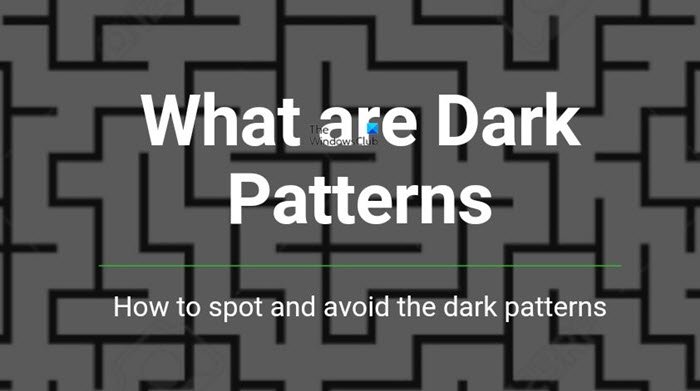What are Dark Patterns?
Dark patterns are the special tricks used in the interface of the applications and websites that make you do the things that you don’t really want to. For example, when you land on a website and have to sign-up even if you don’t want to, or buy a product even if you don’t mean to. Basically, the patterns used to take your consent trickily.
How do Dark Patterns Work?
Dark Patterns are been used for years to trick users say yes even when they don’t want to. To trick them into giving up their money, data, and time. When you visit a website or use an app, you don’t really read the entire thing and just quickly move through the text. This is where the companies trick you with the dark patterns to buy some overpriced policies, subscribe for a monthly service, allow tracking your location, sign-up for a trial version, and much more. One of the most common Dark Patterns is “I accept these terms” button. We often see this button on various websites and apps and most of the time we click on it without even checking the terms. However, if you are careful enough, you can spot and avoid these tricks easily. Let’s see how.
How to spot and avoid the Dark Patterns?
To avoid something, you first need to understand and spot that thing. Have you noticed that subscribe button or a buy-now button on a sale page is so bold, bigger in size, and noticeable whereas the unsubscribe button is always very small in size, blur in color and hidden somewhere between a lot of text? Similarly, the button saying, “I accept these terms” is boldly written where ‘skip installing’ is much less prominent. This is what a Dark Pattern is. A pathway where it is easy to enter but quite difficult to exit. This is very common in software installing pages and e-commerce websites wherein the user is misdirected with the buttons designed in a particular fashion. These are some of the most common patterns used to trick you as a user. You can spot and avoid them only if you are careful enough. Also, you have to leave the habit of giving your consent or accepting the terms blindly. Read: Basic precautions you need to take before clicking on web links. Let’s take a look at some more examples of Dark Patterns commonly used to trick you.
Common examples of Dark Patterns
I am pretty sure you have not heard of the term dark patterns before but you often come across several examples of them daily. Below are some of the most common examples-
The trial version of service– You sign-up assuming it as a trial version but your card gets charged automatically when the trial expired.The interstitial ads- Such advertisements are all over the web and the tiny X button to close these ads is hidden somewhere in the corner. It is actually that small that you often click on the ad instead of closing it.Pop-up for your location- This is very commonly seen in e-commerce websites and apps and most of us have that bad habit to click on the ALLOW button without even realizing that we are actually allowing them to track all our data.Countdown timer- This button you will often see in your emails. The marketing emails have this button with a countdown timer putting up pressure on your click on a button.Sign-up button/ Authorize the app- Have you ever wondered how are you getting tons of marketing emails every day? This is because you are in a habit of authorizing the apps or signing up for the newsletters.Add the add-on- While purchasing something, a small item is shown near your shopping cart insisting you add it. This is also shown as ‘People also buy’ on some websites.Misdirection- User interface specially designed to draw your attention to a particular thing.Hidden costs- The fees, taxes, etc are not shown on the main page but on the last page when we checkout. We normally don’t cancel the transaction after that.Click Baits- The title or the thumbnail images show one thing but the content is about something very different.Disguised ads- The advertisement links are hidden under the download button or the navigation button. Most commonly seen in the software/apps download page and the songs download websites. Out of the 20 download buttons available on the webpage, only one is genuinely a download link, and all others are advertisements.Cookies consent- You can see a pop-asking for cookies consent in almost every second website you visit. These pop-ups contain a big and bright-colored “Accept” button and there is no button seen anywhere to refuse cookies.
These are some of the commonly used examples of dark patterns but there are many more that can be added to the list. There are countless companies using these patterns for years to trick the users. You can check out the Hall of Shame which showcases some of the most reputed global companies who had been tricking the users with these patterns. Read: How to check if a link is safe or not using your web browser?
Can we block the dark patterns?
Unfortunately no. We do have pop-up blockers, etc, available but there is no such program available that can block all the dark patterns being used in the websites and applications. The only way to prevent your data tracking and other types of dark patterns is to be a little careful while browsing the web or clicking any button.
Are Dark Patterns illegal?
This is borderline! However, California reportedly had banned certain types of dark patterns and many other jurisdictions are working on this problem. TIPS:

